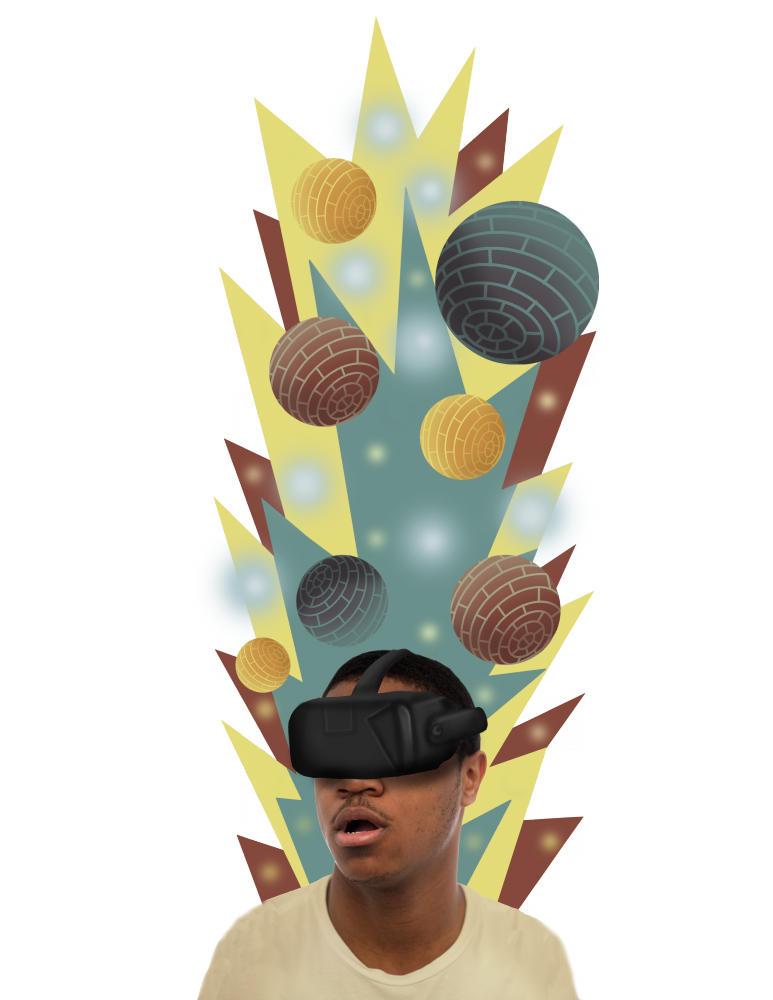I flyew through the void, completing my first orbit around the planet in my personalized mech suit. Up ahead, I spotted a dense cloud of rock in the asteroid belt surrounding the planet and ducked my head, maneuvering my suit to avoid a collision. Upon recovering from the dodge, I spotted the enemy. Balls of machinery had entered my field of vision. Using my eyes, I focused on them, activateed the suit's targeting system and fireed.
The Oculus Rift is an upcoming partial-dive virtual reality system developed by Oculus VR. Oculus has sold developer kits in preparation for the 2015 target release, allowing consumers and programmers the chance to work with the system before its official launch. I recently had the chance to spend a weekend experimenting with Developer Kit 2, the most advanced Rift system to date.
Setup
The system itself is composed of a headset and a head-tracking device connected by a mesh of wires. Successfully connecting them to my desktop proved to be a difficult process. Once the system was set up, the instructions required me to download software from Oculus’s website in order to actually use the system. As luck would have it, the website was experiencing problems the whole week, leaving me unable to download the files. Luckily, a moderator on the Rift’s Reddit page was able to send me a copy of the necessary files, and after another hour of troubleshooting, I was ready to launch my first program. ContentVirtual reality programs are not yet mainstream, but Oculus allows developers to upload their work onto their website, so anyone with a Rift can use it. Relying on the users of r/Rift, I downloaded three programs: Sightline: the Chair, Windland and Vanguard. The programs themselves were fantastic. While the graphics were not the most advanced I’ve seen, they were on par with many current video games. Each game had a different method for controls, including the use of a standard controller as well as using the head tracker to translate head movement to in-game movement. I found myself extremely satisfied with the available programs, especially considering that most of the available content is made by individual programmers or companies experimenting with the technology.
Problems
Since the Oculus Rift is still in the development stage, there were many problems. To start, it took almost five hours to get the Rift setup ready for actual use. Beyond that, you can still see individual pixels when using the system, which takes away from the experience. However, the biggest problem has to do with motion blur and the effects on your brain. After using the system for 20 minutes, most users start to experience intense headaches and nausea. The best way to describe the feeling is that it seems like the Rift has burned out your brain. The effects become more intense after removing the system, and persist for at least half an hour. After spending about six hours using the system, also called 'Rifting,' I was not capable of higher-order thinking for the rest of the day.
The Future
Oculus has been great about sharing its information, which has allowed Samsung to develop their Gear VR system, though the release date is still unknown. Oculus itself plans to release its first official system in 2015, hopefully without the current issues.
As it stands, the Oculus Rift is the first step toward a fully immersive virtual reality experience.
Once this technology becomes readily accessible, I predict that the available content will rapidly become more common and the problems currently present will become non-issues. Now that virtual reality has caught the attention of larger companies, huge amounts of funding are available to take the technology to the next level. With Samsung's upcoming Gear system and Facebook's purchase of Oculus, the technology finally has the jumpstart it needs to push it into mainstream media consumption. The Oculus Rift system has opened the door to the limitless world of virtual reality, and I look forward to seeing the advances in VR technology in the future.








